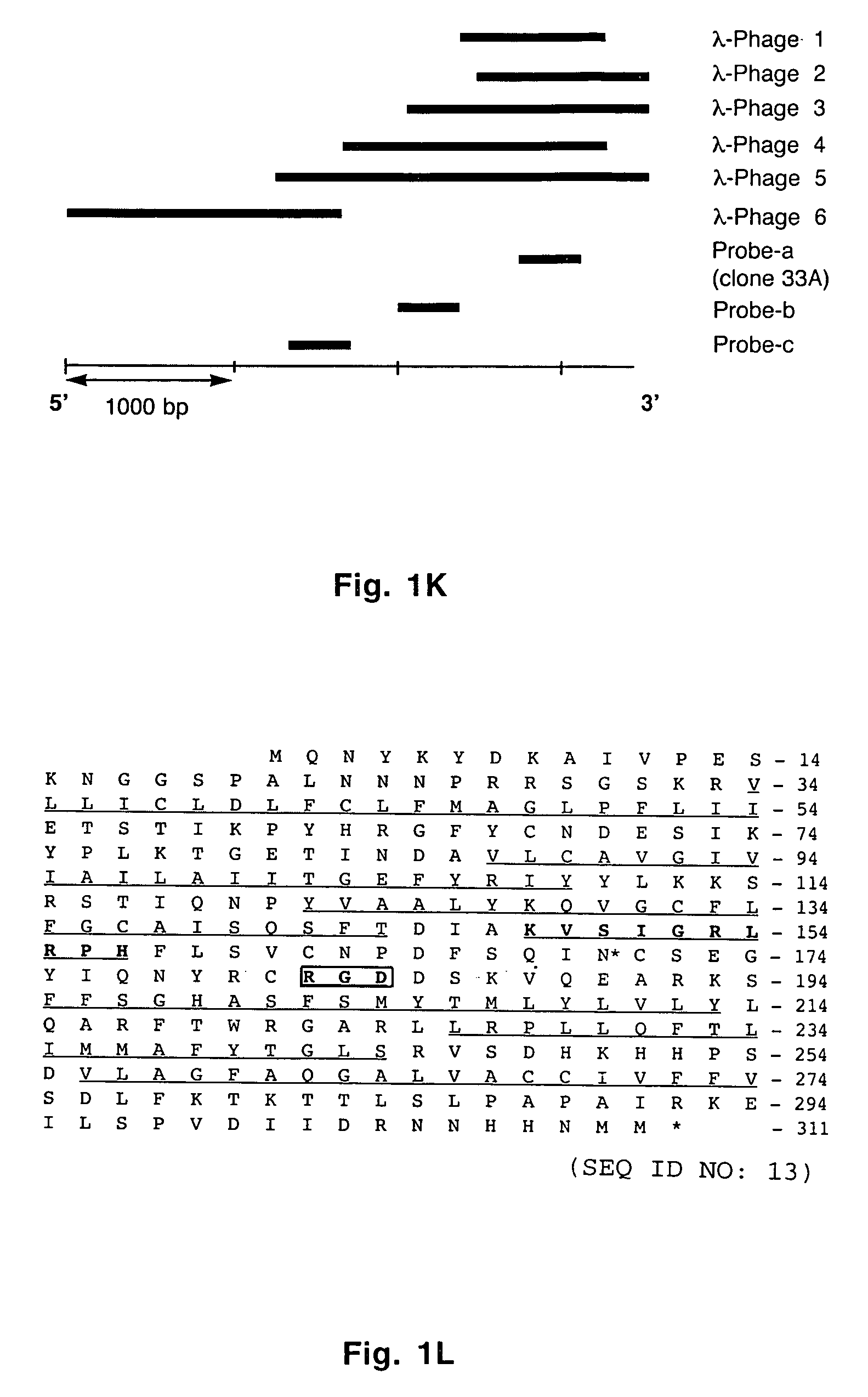Uses of vascular endothelial growth factor and type I collagen inducible protein (VCIP)
a growth factor and vascular endothelial technology, applied in the field of cell cell interaction, can solve the problems of preventing metastasis and impeded wound healing, and achieve the effects of promoting adhesion, spreading and tyrosine phosphorylation, and increasing p120 catenin expression
- Summary
- Abstract
- Description
- Claims
- Application Information
AI Technical Summary
Benefits of technology
Problems solved by technology
Method used
Image
Examples
example 1
[0051] Cells and Reagents
[0052] Human umbilical vein endothelial cells (HUVECs), human dermal microvascular endothelial cells (HdMVECs), carotid artery smooth muscle cells (CASMCs) and aortic smooth muscle cells (AoSMC) were obtained from Clonetics. ECM molecules, endotoxin-free fetal bovine serum, antibiotics, heparin, 100× ITS (insulin, transferrin and selenium), M199 media, anti-α5β1 (P1D6) and anti-α3β1 (P1B5) antibodies and Superscript II reverse transcriptase enzyme were obtained from Invitrogen. Basic Fibroblast growth factor (bFGF) and human recombinant vascular endothelial growth factor (hrVEGF165) were purchased from R&D systems. Bovine skin-derived type I collagen (3.0 mg / ml) solution was purchased from Cohesion Inc. Multiple tissue northern blot, cDNA amplification kit and human placental cDNA library in _Triple-Ex vector were purchased from Clontech Laboratories, Inc. Anti-phosphospecific antibodies were purchased from New England Biolabs. Hybridomas producing the anti...
example 2
[0053] Monolayer and Three-Dimensional Cell Culture
[0054] Monolayer cell cultures were carried out as described previously. Three-dimensional matrix gel was prepared by gently mixing a cold solution of bovine skin-derived type I collagen solution (2.1 mg / ml) with media M199, 1× ITS, hrVEGF165 (100 μg / ml) and glutamine (2.4 mM). The pH was adjusted to 7.5 with 0.1 N sodium hydroxide and sterile water was used to adjust the final volume. Proliferating endothelial cells in the third or fourth passage were cultured in complete media and gently resuspended in complete M199 media at a concentration of 4×105 cells / ml. Twenty four-well tissue culture dishes were filled with 300 μl of cold 3D gel solution, and placed at 37° C. in a CO2 incubator for 30-45 min to polymerize and solidify. Resuspended cells (2×105 cells in 500 μl) were seeded onto 3D gel and the dishes were returned to the CO2 incubator at 37° C. to allow the cells to attach for 2-3 h. At the end of this period, unattached cel...
example 3
[0056] cDNA Library Screening, Northern Blot Analysis, PCR and RT-PCR
[0057] A _TripleEx phage cDNA library prepared from human placenta (Clontech) was screened as described previously (Wary et al., 1993). Plasmids were extracted, purified by Qiagen affinity column and then digested with EcoRI and XbaI to confirm the presence of the insert. Six overlapping clones were subjected to DNA sequencing. All northern blot analyses were performed as described previously (Wary et al., 1993). In brief, 20 μg of total RNA or 2 μg poly(A)+ mRNA from control cells (i.e. endothelial cells embedded in three-dimensional type I collagen in the presence of 20% human adult serum-AB±100 ng / ml hrVEGF165 supplied every 6 h) were fractionated on an agarose gel containing formaldehyde. To analyze various mRNA levels by RT-PCR, the following primers were used: VCIP-forward 5′-GGAGGATCCCTCGCGCCGCAGCCAGCGCCATGC-3′ (SEQ ID NO:3) and -reverse 5′-GTGGCACCTACATCATGTTGTGGTG-3′ (SEQ ID NO:4); human uPAR-forward 5′-C...
PUM
 Login to View More
Login to View More Abstract
Description
Claims
Application Information
 Login to View More
Login to View More - R&D
- Intellectual Property
- Life Sciences
- Materials
- Tech Scout
- Unparalleled Data Quality
- Higher Quality Content
- 60% Fewer Hallucinations
Browse by: Latest US Patents, China's latest patents, Technical Efficacy Thesaurus, Application Domain, Technology Topic, Popular Technical Reports.
© 2025 PatSnap. All rights reserved.Legal|Privacy policy|Modern Slavery Act Transparency Statement|Sitemap|About US| Contact US: help@patsnap.com



